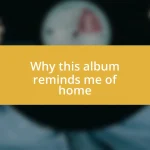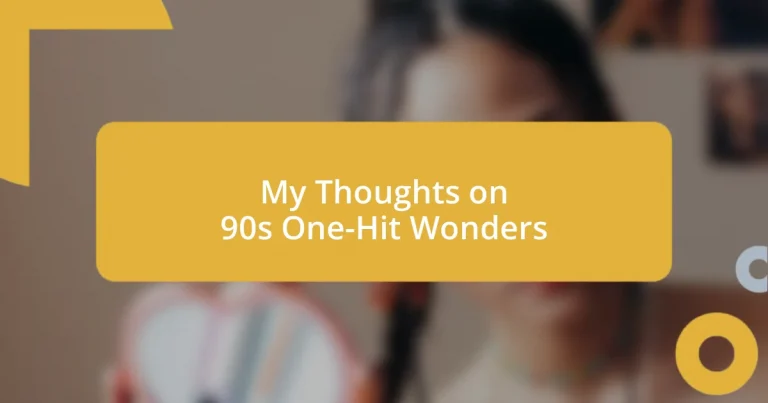Key takeaways:
- The 90s was a vibrant era for one-hit wonders that captured the public’s attention with catchy hooks and diverse musical styles, often becoming nostalgic anthems for shared experiences.
- One-hit wonders significantly influenced pop culture, driving dance crazes and memorable moments while also addressing social issues, showcasing their lasting impact on society.
- The unpredictable nature of fame in the music industry is highlighted by the success of these fleeting artists, reminding us that a single remarkable song can leave a lasting legacy, regardless of an artist’s later career.
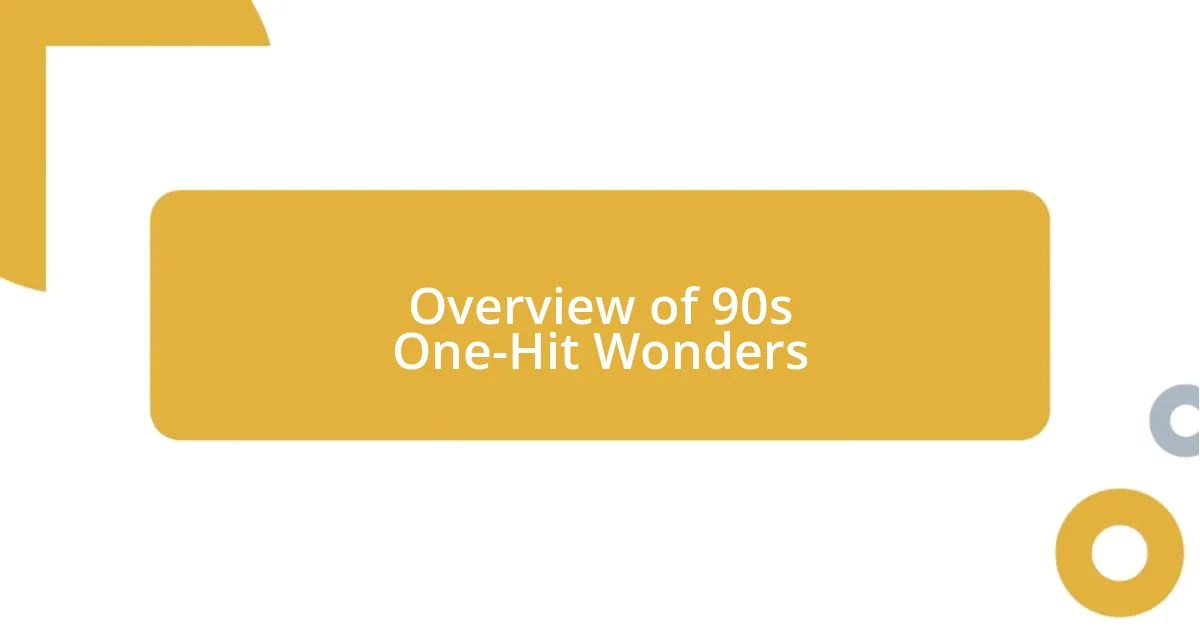
Overview of 90s One-Hit Wonders
The 90s was a goldmine for one-hit wonders, a time when musical diversity flourished, allowing some artists to shine brightly—even if only for a moment. It’s fascinating to think about how these songs managed to capture the public’s attention and then seemingly fade into obscurity. Remember when you couldn’t escape the infectious hook of “Ice Ice Baby”? What was it about those tracks that made them so memorable, yet the artists behind them disappeared from the mainstream?
I often find myself reminiscing about mixtapes featuring these catchy tracks, which were staples at every party. Songs like “Tubthumping” by Chumbawamba stirred up a lively atmosphere, and everyone would sing along, even if most of us had no idea what the deeper meanings were. It’s a real testament to the power of music; how a single song can unite people, if only for a fleeting moment, certainly strikes a chord, doesn’t it?
These one-hit wonders often tell us something about the ever-shifting landscape of popular music. While some artists might have struggled to reproduce their initial success, their impacted cultural zeitgeist reverberated long after their hits faded. Could it be that the unpredictability of the music industry means every so often, a catchy tune remains etched in our memories, even when the artist themselves doesn’t?

Impact of One-Hit Wonders
One-hit wonders can have a surprisingly profound impact on pop culture and musical trends. For instance, the infectious beats and memorable lyrics of songs like “Macarena” didn’t just monopolize radio airwaves; they became a cultural phenomenon, inspiring dance crazes at parties and weddings. I can vividly remember a summer filled with friends trying to nail those dance moves; it felt like a unique moment of collective joy that connected us all.
Interestingly, the influence of these fleeting chart-toppers often extends beyond their short-lived success. Artists like Tag Team with “Whoomp! (There It Is)” introduced a distinctive sound that resonated in sports arenas and advertisements long after the song was released. I think it’s remarkable how one catchy phrase can become a staple in different contexts, breathing new life into a song years later, wouldn’t you agree?
Ultimately, these one-hit wonders reflect a unique intersection of music, nostalgia, and community engagement. They spark memories and conversations that often outlive the songs themselves. I sometimes wonder how different our playlists would be without the quirky entertainment these artists provided, mingling harmoniously with the deeper cuts we often celebrate.
| One-Hit Wonder | Impact |
|---|---|
| “Ice Ice Baby” | Introduced rap into mainstream pop. |
| “Macarena” | Fostered a global dance craze. |
| “Tubthumping” | Became an anthem for resilience and celebration. |
| “Whoomp! (There It Is)” | Gained cultural longevity through sports and media. |

Defining Characteristics of 90s Hits
The defining characteristics of 90s hits are as varied as the artists themselves, yet they often share certain traits that made them unforgettable. I think about the bold hooks and catchy choruses that grabbed listeners by the heart, creating an immediate connection. These tracks often had that irresistible beat, which helped them inch their way into every radio station’s playlist. I remember blasting “Baby Got Back” during countless car rides, completely embracing the playful, confident spirit of the song.
- Catchy Hooks: These songs often feature instantly memorable melodies that stick in your mind.
- Blend of Genres: The 90s saw a mix of pop, rap, rock, and dance, creating diverse sounds.
- Distinctive Lyrics: Many songs employed playful or quirky lyrics that resonated with listeners.
- Cultural References: They often captured the essence of 90s culture, making them feel relevant and relatable.
- Community Engagement: These tracks inspired sing-alongs, dance crazes, and even party anthems, bringing people together.
Some of these hits even tell stories that reflect the time’s spirit, like the triumphs and struggles we all experienced. The energetic vibe of songs like “Smash Mouth’s All Star” always reminds me of backyard barbecues where everyone gathered, laughing and dancing without a care in the world. The beauty was in those shared moments, as the music blended seamlessly into the fabric of our lives, making the songs feel almost like friends that accompanied us through thick and thin. It’s remarkable to consider how these anthems served as soundtracks to our youth, right?
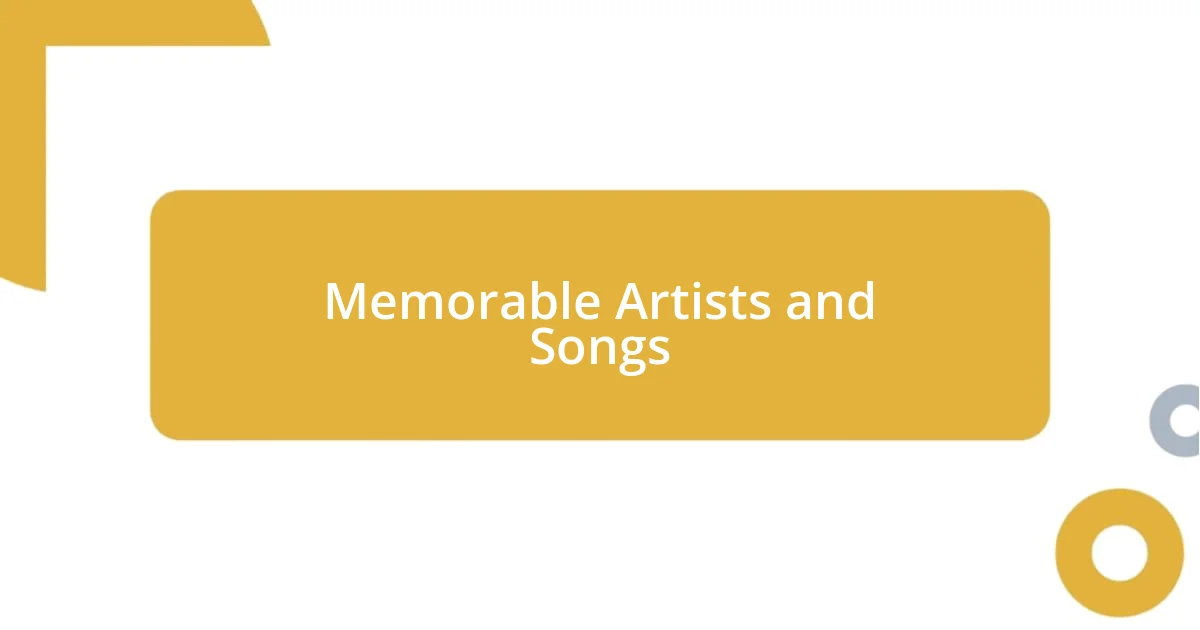
Memorable Artists and Songs
When I think of memorable one-hit wonders, “Torn” by Natalie Imbruglia immediately comes to mind. The raw emotion in her voice resonated with so many of us, capturing feelings of heartbreak and confusion. I remember blasting it in my room, feeling as if she was singing directly to me—what a powerful connection that was!
Then there’s the undeniable charm of “I Want It That Way” by the Backstreet Boys. It wasn’t just a song; it became an anthem for everyone who ever felt the thrill of young love. I can still picture those sleepovers where we all sang along, harmonizing as if we were auditioning for a talent show. How could such an infectious tune not pull us in with its catchy melody and heartfelt lyrics?
Another gem is “Bitter Sweet Symphony” by The Verve, which I find hauntingly beautiful. The orchestral arrangement along with its poignant lyrics spoke volumes about life’s struggles and the search for meaning. I recall times when I’d just sit back, close my eyes, and let it wash over me—it felt like a soundtrack to introspection. Isn’t it fascinating how music captures such profound feelings and memories, making those fleeting moments feel timeless?
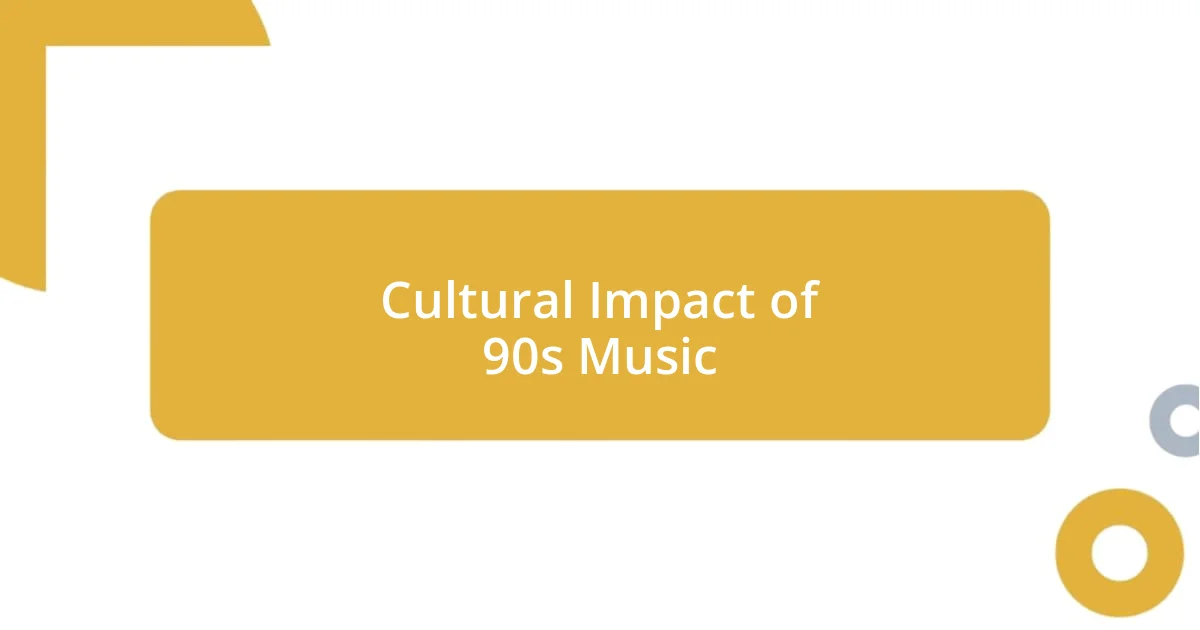
Cultural Impact of 90s Music
The cultural impact of 90s music is hard to overstate. It shaped social interactions in a remarkable way. For instance, I remember how songs like “Macarena” brought everyone together at parties, sparking spontaneous dance-offs. It was more than just rhythm; it was a shared experience that broke down barriers.
Moreover, 90s music was a conduit for social change. Artists like Salt-N-Pepa and Nirvana tackled subjects like feminism and mental health, opening dialogues that resonated with a generation. I often think about how their lyrics encouraged us to speak up about issues we faced, sparking movements that extended beyond music into everyday life. Who would have thought that a catchy beat could carry such weight?
Lastly, the nostalgic power of 90s hits still influences today’s music landscape. When I hear samples from those iconic songs in modern tracks, it transports me back to simpler times filled with carefree summers and laughter. It’s intriguing how those carefree vibes continue to inspire a new generation, reminding us all of the universal language of music. How does something so simple evoke such profound memories? Perhaps it’s just that the songs were woven into the very fabric of our lives, making them forever a part of who we are.
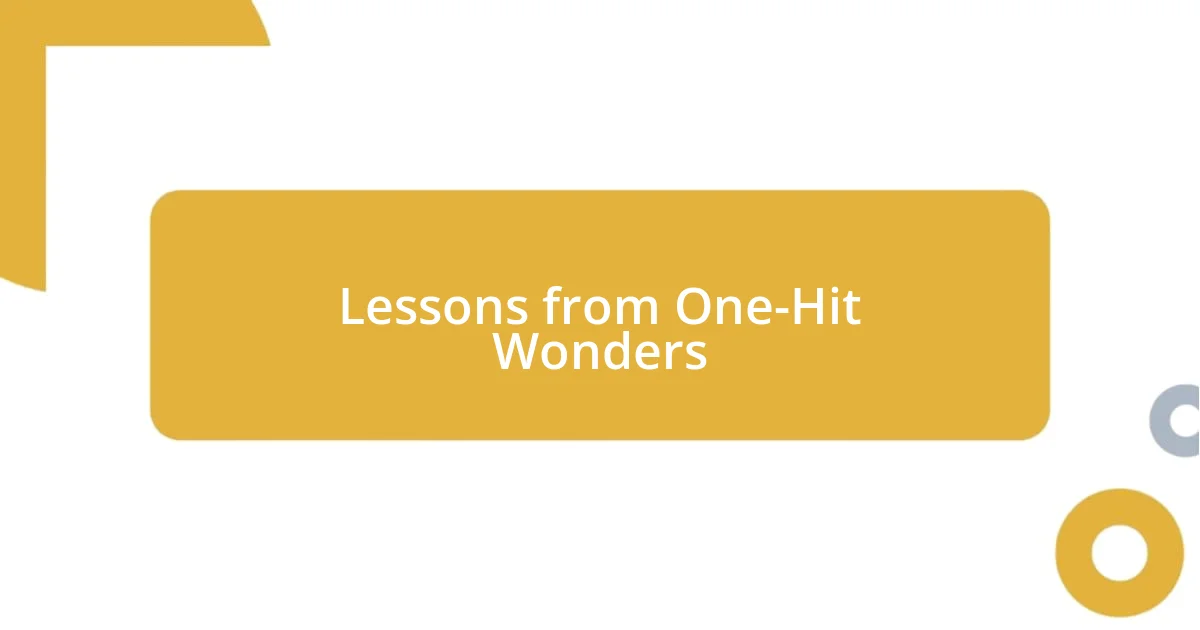
Lessons from One-Hit Wonders
One-hit wonders offer a masterclass in the unpredictable nature of fame. I’ve often reflected on how artists like Vanilla Ice or Mark Morrison created huge buzz with just one catchy song, only to find themselves fading from the spotlight soon after. It makes you wonder—what truly defines success in the music industry? Is it longevity, or can a single great song create an indelible mark?
The fleeting nature of popularity taught me not to underestimate the power of a single moment. I remember how “Who Let the Dogs Out” by Baha Men turned every family gathering into a hilarious sing-along. It was as if that one song had the power to uplift our spirits instantly. This reminded me that even short-lived hits can encapsulate joy and connection, making memorable moments out of seemingly mundane experiences.
Additionally, one-hit wonders often remind us of the importance of authenticity. Artists like Lisa Loeb, with her soulful “Stay (I Missed You),” showcased raw talent stripped of commercial trappings. It made me think about how connecting with audiences through genuine emotion can sometimes resonate even more than sustained success. Isn’t it compelling to consider that a single heartfelt song can carve out a permanent place in our hearts, regardless of an artist’s subsequent offerings?

Where Are They Now
When I think about where some of these 90s one-hit wonders are today, it’s fascinating to realize how their paths diverged after that initial burst of fame. Take Kriss Kross, for instance; their “Jump” was the anthem of my childhood, but they later carved out careers in production and mentoring. How strange it feels to see them transitioning from iconic rappers to behind-the-scenes innovators, showcasing the evolution of their artistry long after their mainstream days.
Then there’s Chumbawamba, whose “Tubthumping” became a sporting event staple. I often ponder the energy that song brought to stadiums and bars alike. Now, they’re more known for their activism than their chart-topping hit. It highlights how a fleeting moment of fame can spur a lifelong mission. Doesn’t that make you reconsider how we define success in the music industry—through sales or impact?
I can’t forget about the impact of groups like the Baha Men, who seem to pop up from time to time in nostalgic playlists. Their catchy beats still resonate at parties, but it’s their re-emergence in entertaining ways that catches my eye. Watching them perform at events or on social media reminds me of how music lingers in our collective memory, even when artists move on. Isn’t it comforting to know that a lively era of music still connects us, regardless of where the artists find themselves now?

